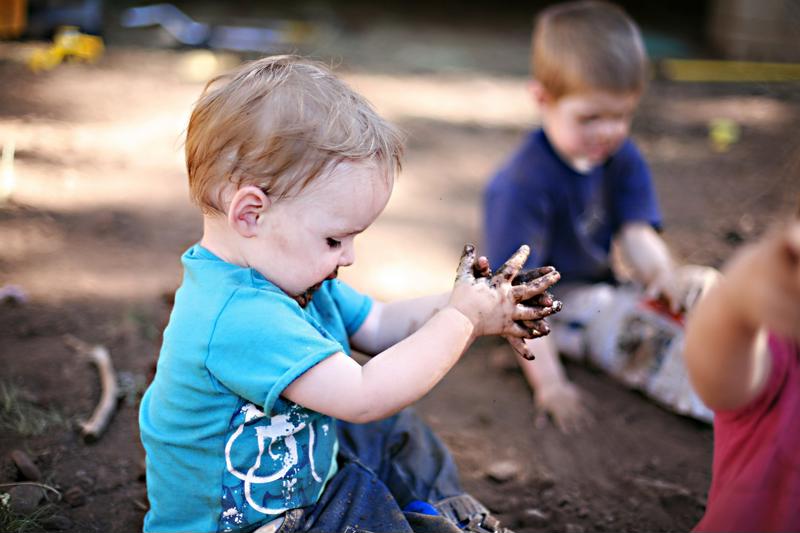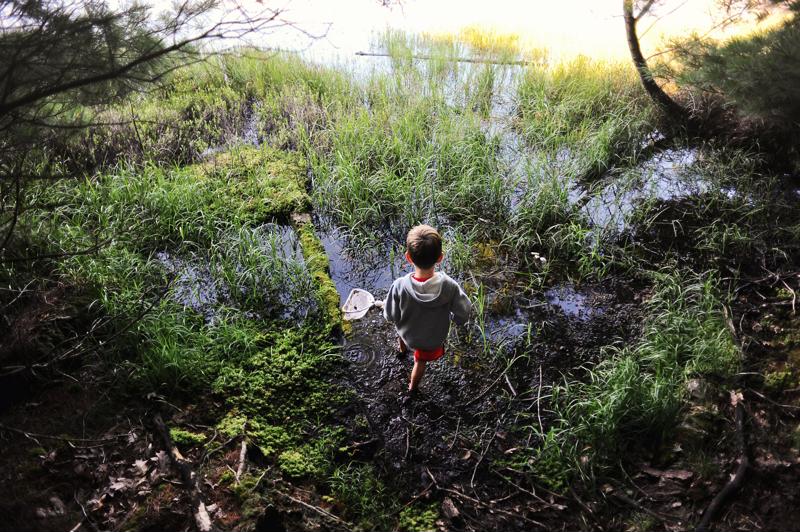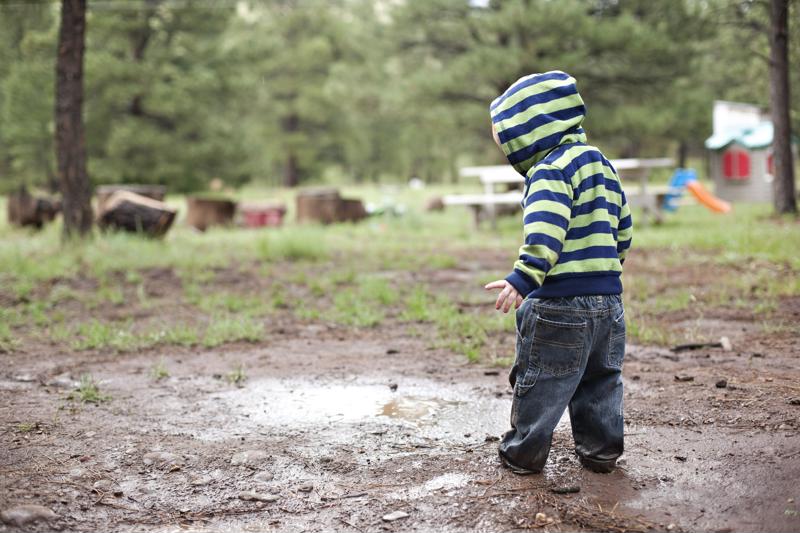Mary Kate Murphy, founder of Massachusetts non-profit Spark Playspace, has four children under the age of six. One of her kids’ favorite activities is playing with their backyard mud kitchen, which comprises an old sink that was salvaged from a home renovation, plus some muffin pans, spatulas and strainers she bought at the local dollar store.
“I think they like it so much because they get to play on their own terms,” Mary Kate said. “I don’t care if it gets messy – in fact, it’s supposed to get messy! They feel empowered being in charge of a space where they have room to use their imaginations without adults hovering over them.”
Research shows children benefit greatly from experiential learning activities such as playing with mud. Here’s why getting down and dirty can boost your toddler’s brain and physical health, plus some mud-based activities you can do at home:

Playing with mud is good for your toddler’s body and brain
The Centers for Disease Control and Prevention recommends children do a minimum of 60 minutes of physical activity every day. However, most kids are spending more time sitting on the couch than moving their bodies. In fact, the American Academy of Pediatrics noted young children are sedentary for 32.8 to 56.3 minutes per hour on average.
Passive activities such as watching television or playing on a tablet or smartphone might keep your toddler occupied while you sweep the floor or do dishes, however, they don’t benefit the body or brain like getting outside and playing in the mud does. In fact, playing with mud can even prevent your kids from getting sick!
Time Magazine reported that when kids touch “dirty” objects in nature such as mud, worms and frogs, they’re encountering microbes that build their immune system. Children who are kept indoors and not exposed to a wide array of microbes have been shown to be more prone to asthma, allergies and obesity.
In terms of brain functioning, any type of free play, such as baking mud muffins or building mud castles, changes prefrontal cortex neuron connections and wires the brain for successful emotion regulation and problem solving, according to NPR.

This is what happened at Spark Playspace’s first-ever Mud Day
The Murphy family’s beloved mud kitchen inspired Spark Playspace’s recent Mud Day event, an afternoon of mud pies, mud pools, mud slides and even a mud launcher!
“We had dirt donated from a local construction company, and with the help of the town fire department and some very timely rain, we created some beautiful mud for the kids to play in,” Mary Kate said with a grin. More than 600 people attended the event, which was a resounding success – in spite of the extra laundry it necessitated.
In addition to the physical and physiological benefits of mud play, Mary Kate noted that there’s an additional perk – one that is crucial in today’s parenting climate.
“Many parents feel their kids are missing out on the joys and experiential learning opportunities they had as kids,” Mary Kate said. “We grew up riding bikes and building forts with neighborhood friends, but kids today don’t have that independence. We live in an era of over-parenting. Before we know it, we’ve created a stifling environment where children quickly lose their natural instinct to explore and create on their own. Playing and learning is synonymous for children, it’s the adults who have drawn lines between the two.”

Mud play activities to do at home
- Make mud! The simple action of dumping a bucket of water over dirt and mixing the two together with sticks is a scientific learning activity for toddlers in and of itself.
- Add trucks! Does your toddler love vehicles? Playing in the mud with trucks allows children to use their hands and imaginations to shape roads, parking spots and hills.
- Grab a net! Live near a pond, stream or lake? Take a net with you and let them scoop up bugs, frogs, fish and lily pads. See skunk cabbage nearby? Let them step on it. It’s all about engaging the senses and playing into their natural curiosity.
- Use PVC pipes! Little Bins for Little Hands suggested using PVC pipes, which can be bought at your local hardware store. Budding engineers can build anything they’d like!
- Be artsy! Use large paintbrushes and let your child “paint” in the mud.
How do you encourage mud play in your home?
